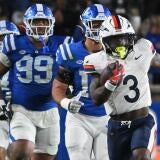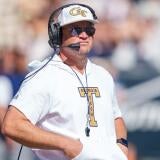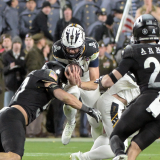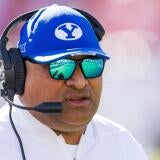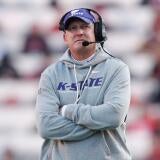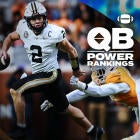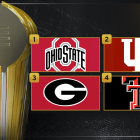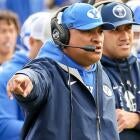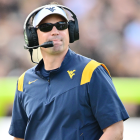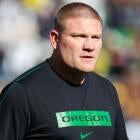SMU joins the ACC: How the Mustangs rose from the death penalty and how they've prepared for a step up
For more than three decades, SMU has sought a return to prominence after it was rocked by the NCAA "death penalty" stemming from repeated NCAA violations, most notably under-the-table payments to players
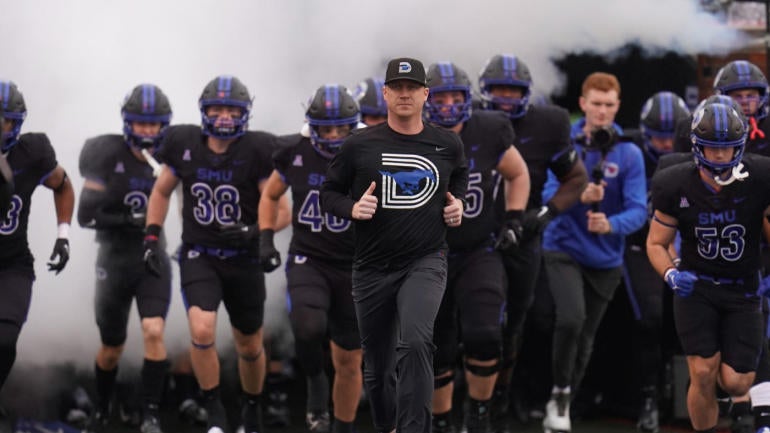
Quick turnarounds are part of the job as a college football coach, but in the mad-dash era of conference realignment, recent history reveals that a hurried transition doesn't usually lead to immediate success.
That's particularly true for the football programs making the jump from the mid-majors to power conferences. With only one year to prepare for the jump from the AAC to the Big 12, four new teams finished with losing records in 2023 (18-31 combined).
SMU, thanks to its deep pockets and politicking, will make a similar move this fall when it jumps into the ACC -- as of July 1, the Mustangs are official members of the Atlantic Coast Conference. From the NCAA's death penalty in 1987 to several resurrection attempts, the Mustangs seem to have finally found their footing thanks to the help of big boosters, big spending ($400 million invested in athletics since 2013) and a reinvigorated focus on football. One question is whether SMU can avoid repeating the recent debuts of other mid-major programs that jumped to the big time with little time to strengthen their rosters via the transfer portal and high school recruiting.
It's been just 10 months since SMU and the ACC went public with their marriage. The expedited timeline certainly makes it more difficult to build a power-conference roster overnight. As SMU's coaches were busy preparing for their final season in the AAC, they also had to shift recruiting into overdrive.
"We've done, from January until now, everything we could possibly do as a staff to try to build as much depth as we can," SMU coach Rhett Lashlee told CBS Sports. "We haven't been naive to where we're going."
The Mustangs certainly seem more prepared on paper than their former AAC counterparts. SMU won 11 games for the first time in 41 years, won the AAC title and pushed Oklahoma to the brink in a road loss last season. The Mustangs return a locker room full of starters, including quarterback Preston Stone and the team's top seven receivers from a top-10 offense. On defense, 10 of the top 11 tackles return and the pass-rush led by Elijah Roberts (10 sacks) last season was underrated.
More importantly, SMU hit the portal to build depth along the offensive and defensive lines to contend with the weekly wear-and-tear of the ACC. Thirteen of the Mustangs' 19 new transfers are linemen, and 12 of them played for power conference teams last season. SMU's transfer class ranks 31st nationally and seventh in the 17-team ACC.
"We're literally going up a level for a lack of a better analogy, so we have to raise the level of expectations of ourselves," Lashlee said. "That's mainly because you just can't have an off week and expect to win like maybe we could have last year, but you also have to understand the intensity in recruiting, the intensity of the expectations of your opponents."
SMU still has time to prepare thanks to scheduling, with a four-week buffer before jumping into the ACC on Sept. 28. That's when reigning ACC champion Florida State comes to Dallas for the Mustangs' conference debut.
For more than three decades, SMU has sought a return to prominence after it was rocked by the NCAA "death penalty" stemming from repeated NCAA violations, most notably under-the-table payments to players. The Mustangs have spent plenty of time wandering in the desert since, but a program that has flashed recently is now set to take a milestone step in joining the ACC this fall -- even without receiving any conference revenue for nine years.
Below is a look at SMU's trek back to having a seat at the table in the power conference landscape.
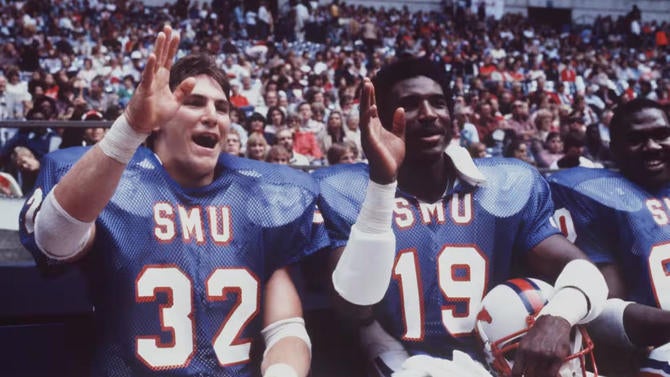
1987-88: SMU football goes dark after NCAA death penalty
SMU's on-field momentum from the early 1980s was already waning after posting back-to-back 6-5 finishes from 1985-86, but then came the crushing blow in February 1987, when the NCAA slammed SMU with a "Death Penalty" punishment for widespread recruiting violations, shutting the Mustangs' football program for two seasons. Scholarships were stripped away en masse, and SMU did not take the field again until 1989 -- the NCAA canceled the Mustangs' 1987 campaign before the school itself elected to not play in 1988 -- as it faced NCAA sanctions that have been seen since in terms of severity. It all made for an abrupt halt for a program that flourished in the early 1980s amid emergence of the "Pony Express" running back duo of Craig James and Eric Dickerson.
1989-95: Mustangs a non-factor as Southwest Conference fizzles
SMU returned to the field in 1989, but due to the effects of the severe sanctions, the Mustangs only won two games that season. It marked the start of a seven-year stretch in which the Mustangs only won 13 games, not winning a conference game again until 1992. Problems on the Hilltop only compounded when the Southwest Conference, which SMU had been part of since 1918, began to fracture, starting with Arkansas' decision in 1991 to exit for the SEC. The league eventually dissolved after the 1995 season, and the Mustangs were not included when Texas, Texas A&M, Baylor and Texas Tech joined forces with the Big Eight schools to form the Big 12. Rice, Houston and longtime rival TCU were also left behind during that split.
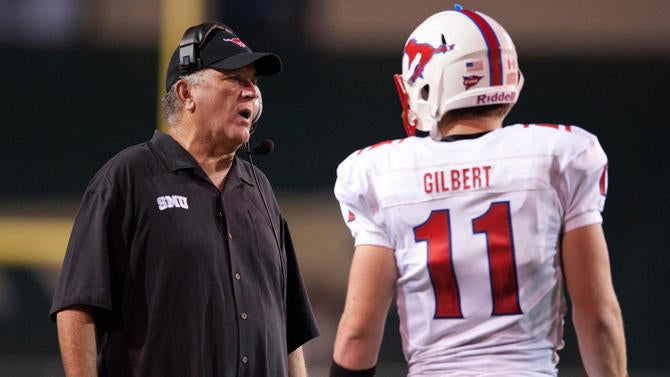
1996-2012: The wilderness of the WAC, Conference USA
With the Southwest Conference no more, SMU found a home in the WAC in 1996, where it remained through 2004. The 1997 campaign -- the program's fist under coach Mike Cavan -- brought the Mustangs their first winning season (6-5) post-death penalty, but they wouldn't finish above. 500 again while in the WAC. Lows from that stay included a winless season in 2003.
SMU found a new home when it joined Conference USA in 2005. The Mustangs endured consecutive 1-11 finishes from 2007-08, but a coaching transition from Phil Bennet to June Jones between those seasons ultimately ushered in some hope for SMU. Jones guided the Mustangs to eight wins and a bowl game in 2009, feats that SMU had not accomplished since a 10-2 finish in 1984. That kicked off a stretch in which the Mustangs reached a bowl game in four straight years under Jones before SMU again found itself on the move.
2013-23: Twists and turns in the AAC
SMU's admittance into the American Athletic Conference a decade ago was a step forward for the Mustangs in terms of conference strength, but the early returns weren't promising. SMU's AAC debut in 2013 saw the program finish below .500 (5-7) before the bottom gave out in 2014. Jones resigned two games into the season as SMU plummeted to a 1-11 record. Jones' eventual replacement, Chad Morris, got the Mustangs back to a bowl game by 2017, only to leave the Hilltop for an ill-fated tenure at Arkansas.
Morris' departure, however, gave way to SMU soon putting together its best three-year stretch of football in decades when the Mustangs went across the Dallas-Fort Worth Metroplex to hire Sonny Dykes -- then an analyst at TCU -- as coach. SMU showed growing pains during a 5-7 finish in Dykes' 2018 debut, but an increased emphasis on NCAA transfer portal -- specifically power conference players with Dallas-area roots -- gave way to SMU flipping the script under Dykes in 2019. The Mustangs rode a 8-0 start to their first 10-win season since 1984, and also spent time in the AP Top 25 rankings for the first time since 1986.
SMU continued its winning ways under Dykes for the next two years, going 25-7 in a three-year stretch from 2019-21 before he was eventually poached by TCU to replace longtime Horned Frogs coach Gary Patterson. The Mustangs subsequently turned to Lashlee -- Dykes' offensive coordinator at SMU from 2018-19 -- to fill the void. Lashlee guided SMU to a 7-6 finish in his 2022 debut but saw a breakthrough in 2023, finishing 11-3 and beating Tulane for the school's first conference championship since 1984.
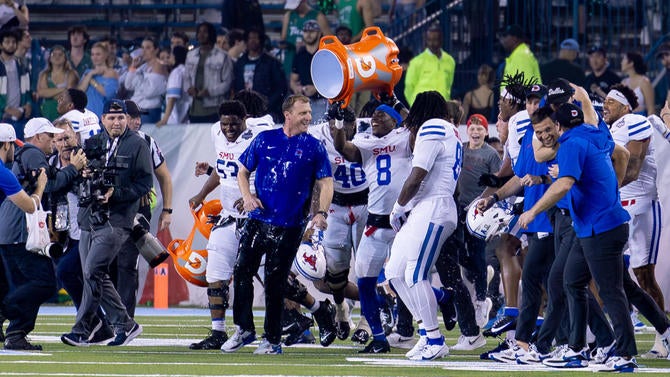
2024: SMU's new seat at the Power Four table
July 1 marks the culmination of a strong push by SMU to join a power conference amid a stretch in which college athletics has been dominated by conference realignment and NIL. The Mustangs were seen for the better part of the last year as strong candidates to join the Pac-12 if it sought to backfill the loss of USC and UCLA to the Big Ten. Of course, the Pac-12 is now extinct.
The wealthy booster base at SMU's disposal is no secret -- it's a big reason why SMU is willing to forgo ACC revenue payments for nearly a decade -- and the Mustangs haven't been afraid to flex that. Within the past year, SMU broke ground on a new $100 million end zone complex at Gerald J. Ford Stadium, bolstered by a record $50 million gift to its athletic department from the Garry Weber Foundation. The university isn't expecting donor support to slow down either.
"I expect that the individuals who have gotten us to this point will continue to invest, because that is who they are and what they do," SMU athletic director Rick Hart said in 2023. "This is really an opportunity. We need to broaden that support base, and we need others who have been on the sidelines or have been hesitant, whatever it is to step forward. And I don't think there is any other moment where you could replicate the opportunity we have."
Unsurprisingly, SMU has also been a major player in the NIL landscape since the NCAA permitted players to be compensated for their likeness two years ago. In August 2022, it was revealed that SMU football and basketball players could earn $36,000 annually in NIL compensation through the Boulevard Collective, spearheaded by a group of SMU alumni and donors. The school also hasn't been afraid to embrace its notorious past that led to the NCAA sanctions now that student-athletes can profit freely.


